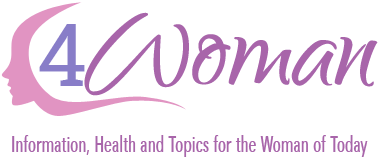Symptoms of Acne
The Common Form of Acne
The typical form of acne that many people suffer from is acne vulgaris, which means common acne. This form of acne is caused by oils secreted from the glands that combine with the naturally occurring dead skin cells to block the hair follicles. Once the hair follicles are blocked oil secretions build up beneath the skin and provide the perfect environment for skin bacteria called propionibacterium acnes to grow uncontrolled. In response to the bacteria growth the skin becomes inflamed and a visible lesion or blemish results. Areas most commonly affected by acne are the face, chest, back, shoulders and upper arms.
Two Types of Acne
Acne is found in two main types non-inflammatory and inflammatory. People who have the non-inflammatory type typically suffer from a few whiteheads and blackheads on the face. Non-inflammatory is a mild type of acne that can often be effectively treated using nonprescription medications. The majority of people who suffer from acne have this form.
The second form or inflammatory acne is not as common among people with acne. This is when whiteheads become inflamed causing red pimples and pustules to develop. This is a severe form of acne that can cause disfiguring cysts and deep, pitting scars on the face, neck, back, chest and groin. To treat this form of acne prescription drugs and sometimes-even surgery are required.
Visible Signs of Acne
There are three visible forms of blemishes to look for as signs of acne. A blackhead is a blemish made up to dead skin and hair cells that has a dark color. A whitehead appears as a white or skin-colored bump under the skin. Papule, pustule or nodules appear as a red and swollen lesion due to the inflammation or infection of the tissue. These are often painful and feel hard. Blackheads and whiteheads are signs of non-inflammatory acne and papule, pustule or nodules are signs of inflammatory acne.
Additional Symptoms
In addition to finding the visual signs of acne, it may be necessary to examine other symptoms caused by acne to get a full picture of the possible symptoms acne can cause. The first set of symptoms come as a complication to acne and can include any of the following:
- Scarring
- Social Problems
- Psychological Trauma
Then there are symptoms from the underlying causes of acne, which can include any of the following:
- Excess Androgen Hormones
- Puberty
- Jacobs Syndrome
- Cushing’s Syndrome
- Diabetes
- Polycystic Ovary Syndrome
Forms of Acne
There is several forms of acne and based on the type your have the sources or symptoms of your acne may be different. This article has already discussed acne vulgaris, which is the common form that is typically found during puberty in teenagers. Next is chemical acne, which can be caused by those who are exposed to certain chemicals and oils. Some adults may develop this form of acne if they are exposed to specific chemicals or oils on the job. Chloracne is a form of acne that is caused by exposure to chlorinated hydrocarbon chemicals. Anyone exposed to high amounts of chlorine can have a form of acne. Another form of acne is tropical acne, which is caused by hot and humid conditions. This form often occurs in people who are unaccustomed to hot and humid conditions, particularly young individuals.
The final form of acne is rosacea, which can be considered an adult form of acne. Typically, with this form people will first notice that the skin on their face is very sensitive or that they blush easily. As this form of acne develops, redness on the cheeks will start to linger looking like slight sunburn. The symptoms of rosacea come and go depending on the severity of the condition.

